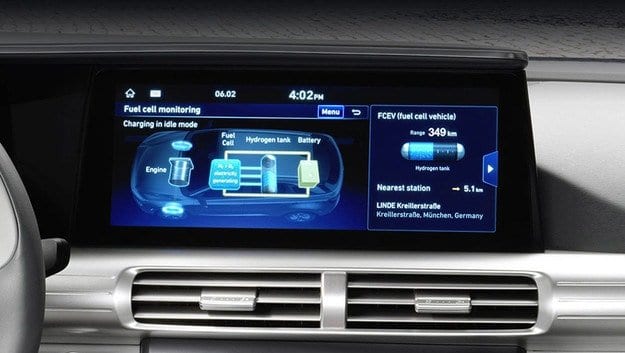
Hyundai to build hydrogen ecosystem in Europe

The question arises: mass models of fuel cells or a large network of charging stations.
Hyundai calls the development of hydrogen transport a "chicken and egg problem." What should appear first: mass models of fuel cells or a sufficiently large network of charging stations for them? The answer is seen in the parallel development of both.
Following in the footsteps of giants like Toyota, Hyundai announced that fuel cell vehicles shouldn't be just cars. And in support of this strategy, a large-scale project was announced: at the end of 2019, a hydrogen production plant with electrolysis with a capacity of 2025 megawatts will start operating at the Alpiq hydroelectric power plant in Gösgen (Switzerland), and by 1600 Hyundai will supply 50 fuel cell trucks for Switzerland and the EU ( The top 2020 will arrive in Switzerland in XNUMX).
The Hyundai Nexo crossover recalls that a fuel cell car is, in fact, an electric car that receives electricity not from a battery, but from a block of electrochemical cells. There is also a battery, but a small one, which is needed to protect against electric shock.
We don't usually write about trucks, but sometimes his world intersects with cars. It is about developing a common hydrogen technology and infrastructure. The fuel cell Hyundai H2 XCIENT shown here is two fuel cells with a combined output of 190 kW, seven cylinders with 35 kg of hydrogen and a total autonomous range of 400 km on a single charge.
The project will be implemented under a partnership agreement between Hyundai Hydrogen Mobility (JV Hyundai Motor and H2 Energy) and Hydrospider (JV H2 Energy, Alpiq and Linde), signed at the end of last week. The main goal was announced: "Creation of an ecosystem for the industrial use of hydrogen in Europe". It turns out a slender picture. The mainstream fuel cell vehicles are complemented by trucks, from trucks (such as the Toyota Small FC Truck) to long-distance tractors (examples are Project Portal and Nikola One) and buses (Toyota Sora). This forces the industry to produce more hydrogen, improve production technology, and reduce costs.
The MOU was signed by Cummins VP of Corporate Strategy Ted Ewald (left) and Hyundai VP of Fuel Cells Saehon Kim.
Parallel news on the same topic: Hyundai Motor and Cummins have formed an alliance to develop hydrogen and electric models. This is where Cummins plays an unusual role for most motorists as Cummins doesn't just mean diesels. The company is working on electric drive systems and batteries. Combining these developments with Hyundai's fuel cells is interesting. The first projects under this collaboration will be truck models for the North American market.
2020-08-30
